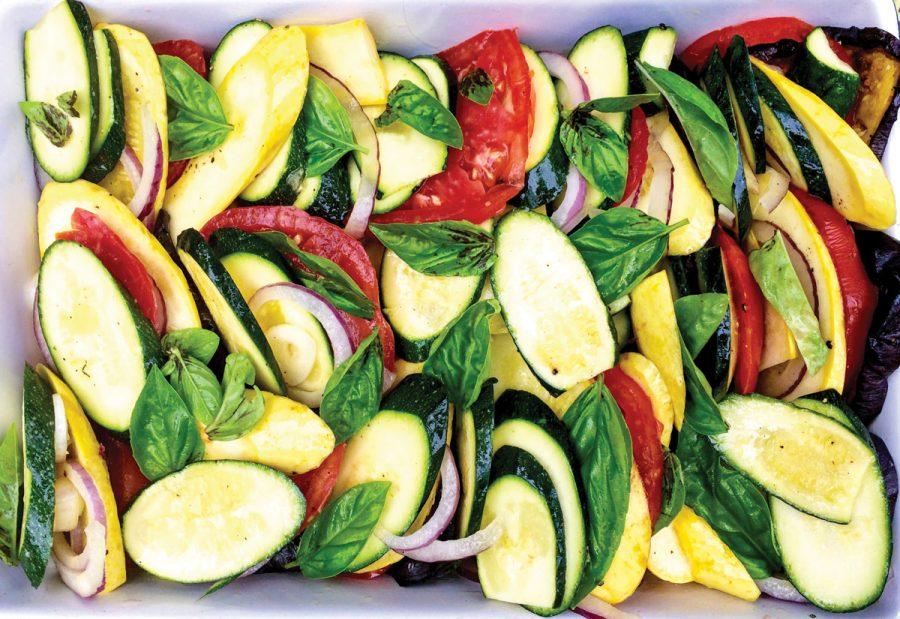Let fall veggies star in Sukkot meals
Published October 4, 2017
Many of us associate Sukkot with the sukkah that synagogues and many families build in celebration of this festival, which is one of three Jewish pilgrimage holidays celebrated each year.
These sukkahs recall the temporary shelters our wandering ancestors erected during their 40-year journey to the Promised Land. They also resemble the structures that farmers build during harvest time. The “roof” of a sukkah, traditionally composed of tree branches, leaves and vines, is open to the sky.
Another Sukkot tradition, which is actually a mitzvah, involves the lulav and esrog, also known as the “four species.” As stated in Leviticus 23:40, “On the first day (of Sukkot) you shall take the product of hadar (goodly) trees, branches of palm trees, boughs of leafy trees, and willows of the brook, and you shall rejoice before the Lord your God seven days.”
The lulav is formed by bundling a closed frond from a date palm tree, a branch and leaves of a willow tree, and boughs and leaves of the myrtle tree. Along with an esrog, which is a beautiful and aromatic citrusy fruit, it is a mitzvah to hold the four species side by side and shake them three times in each direction and then up and down to glorify G-d and all of the world.
As explained on the Aish.com website, the Kabbalists believe that these four species represent four kinds of Jews:
The esrog (yellow citron) has a good taste and a good fragrance. It represents a person with wisdom (Torah learning) and good deeds.
2. The hadas (myrtle) has a good fragrance but is inedible. It represents a person who has good deeds, but lacks wisdom.
3. The lulav (date palm) is edible but has no smell. This represents the person with wisdom, but without good deeds.
4. The aravah (willow) has neither taste nor smell. It represents a person with neither good deeds nor Torah learning.
On Sukkot, all four species – and thus all four personalities – are united.
Sukkot is a joyful holiday that celebrates the bountiful harvest of fall fruits and vegetables. While there are no specified or symbolic foods to eat during the seven days of Sukkot, it is apropos to focus on meals that feature late summer and early fall produce.
Examples include late summer squashes and tomatoes, winter squashes, root vegetables, heartier cool weather greens, pomegranates, pears and apples.
I have put together a collection of recipes that can make up an entire meal or be side dishes to accompany anything else your family likes to serve on Sukkot. Because meals are often enjoyed in the sukkah, I focus on dishes you can easily transport outdoors from your kitchen.
It is traditional to serve two challahs on Sukkot. Serve your challahs with honey for an extra sweet holiday!
Margi Lenga Kahn is the mother of five and grandmother of five. A cooking instructor at the Kitchen Conservatory, she is working on a project to preserve the stories and recipes of heritage cooks. She welcomes your comments and suggestions at [email protected].
















